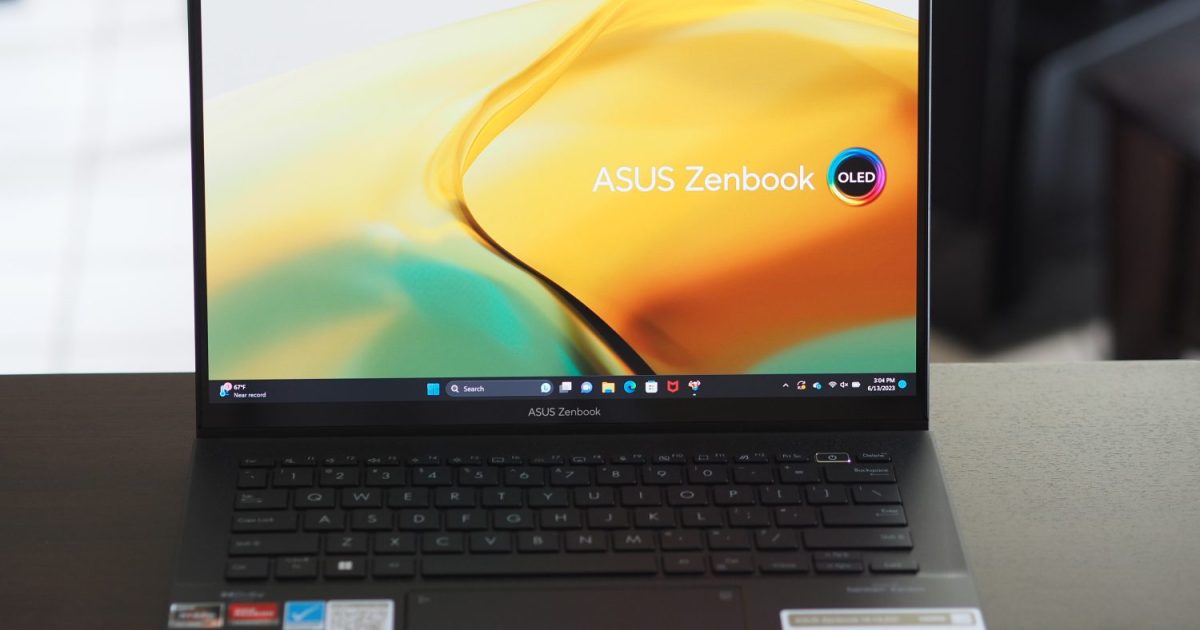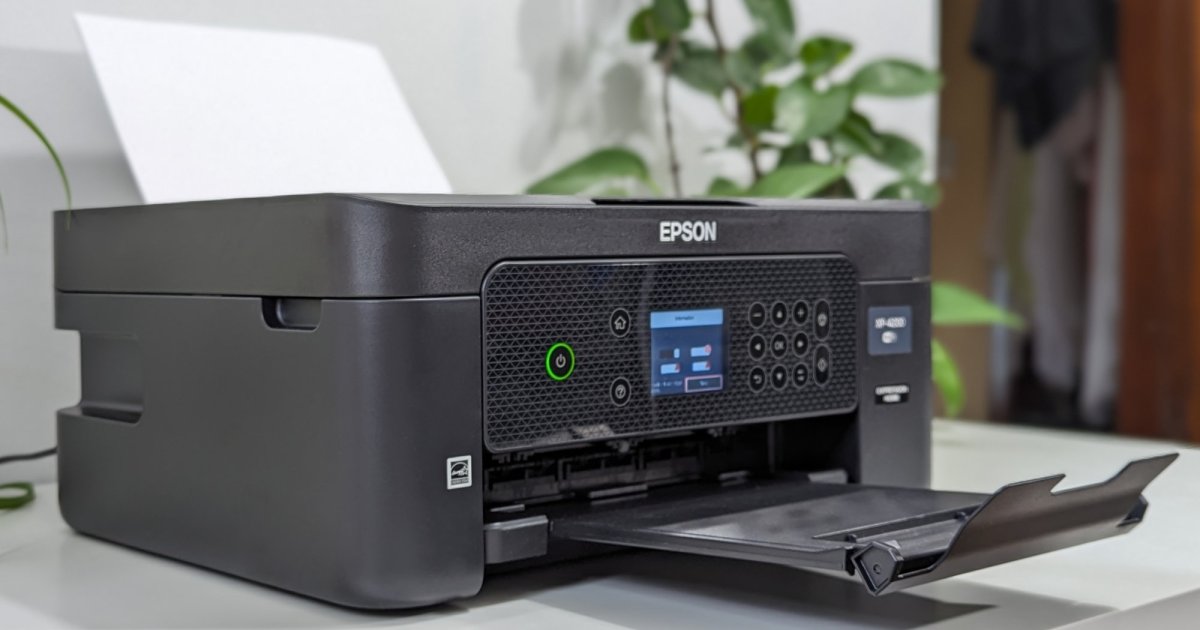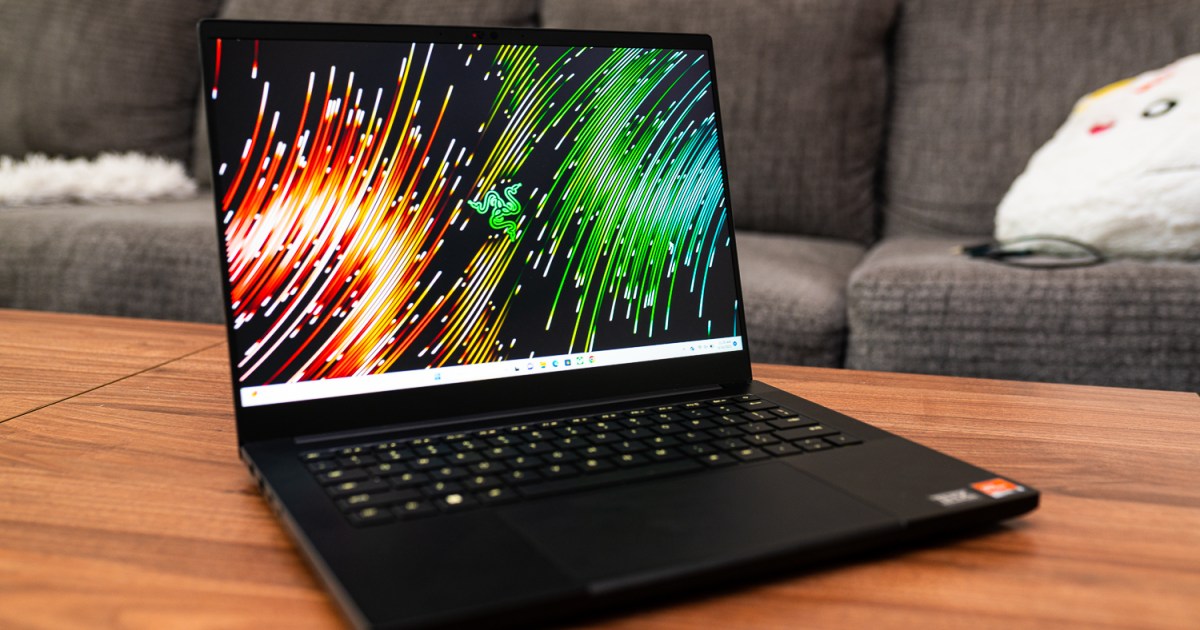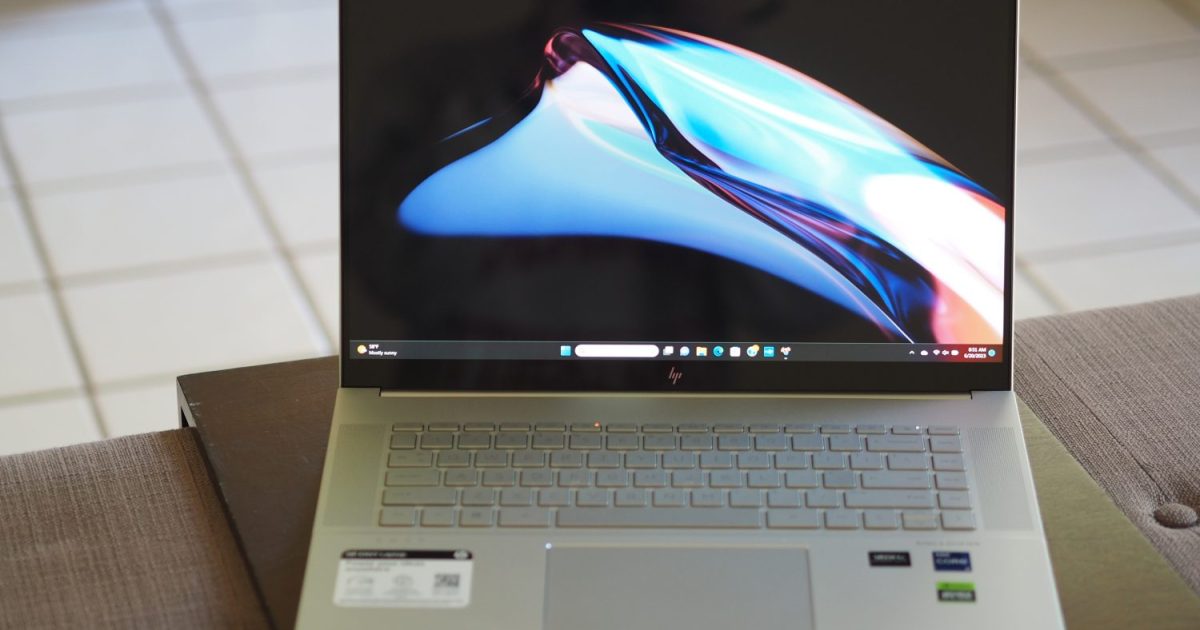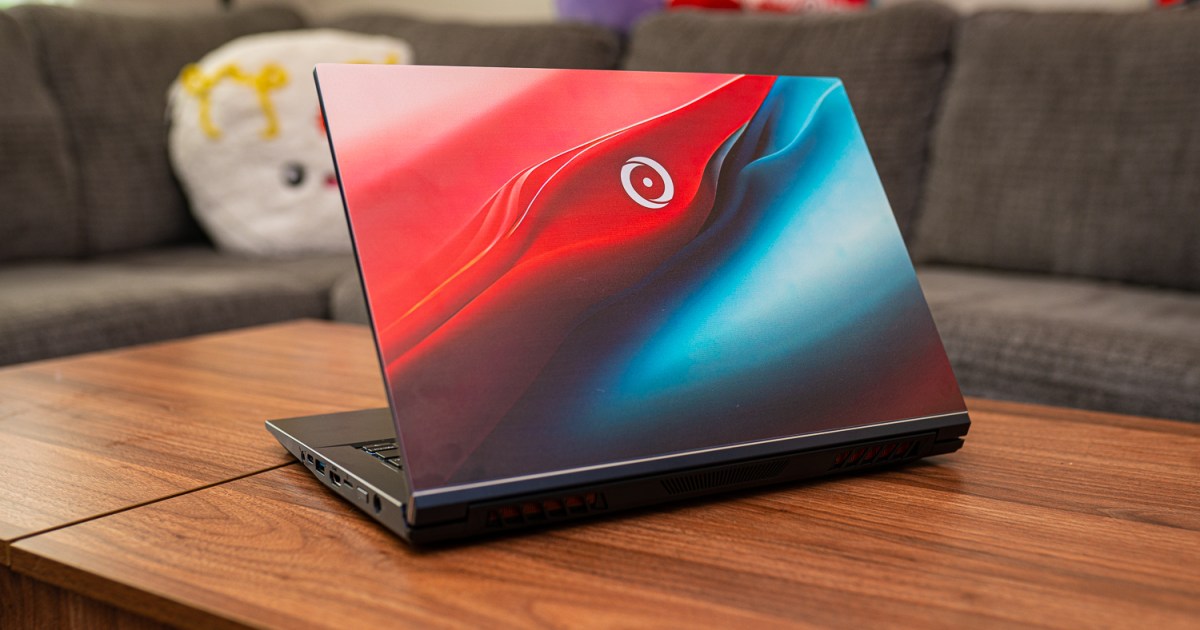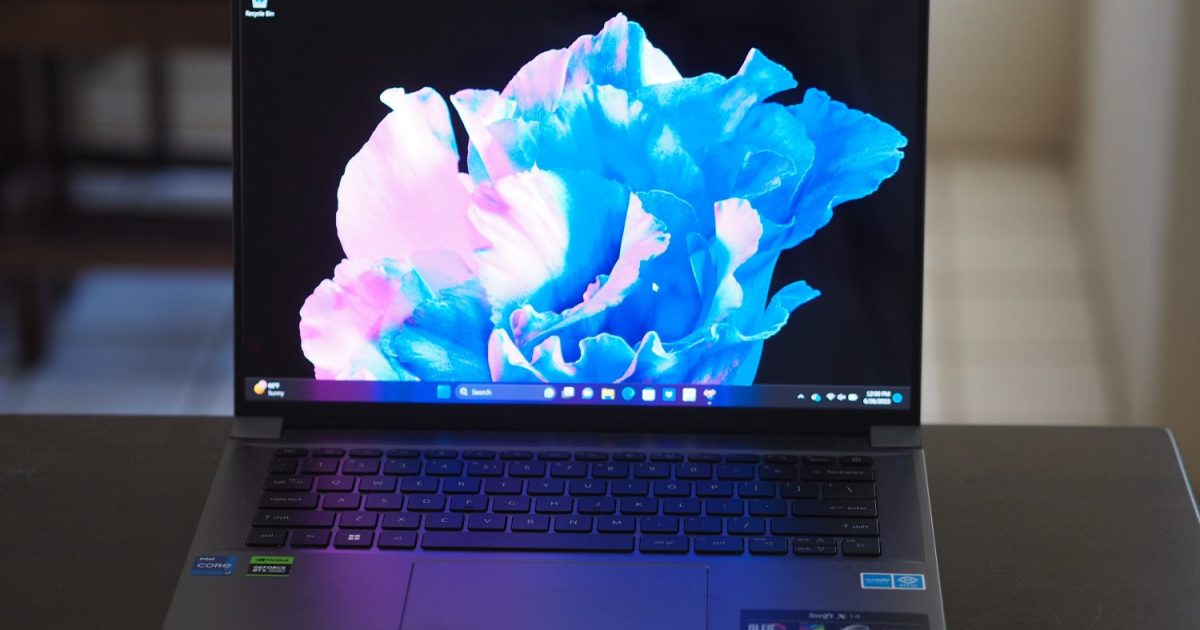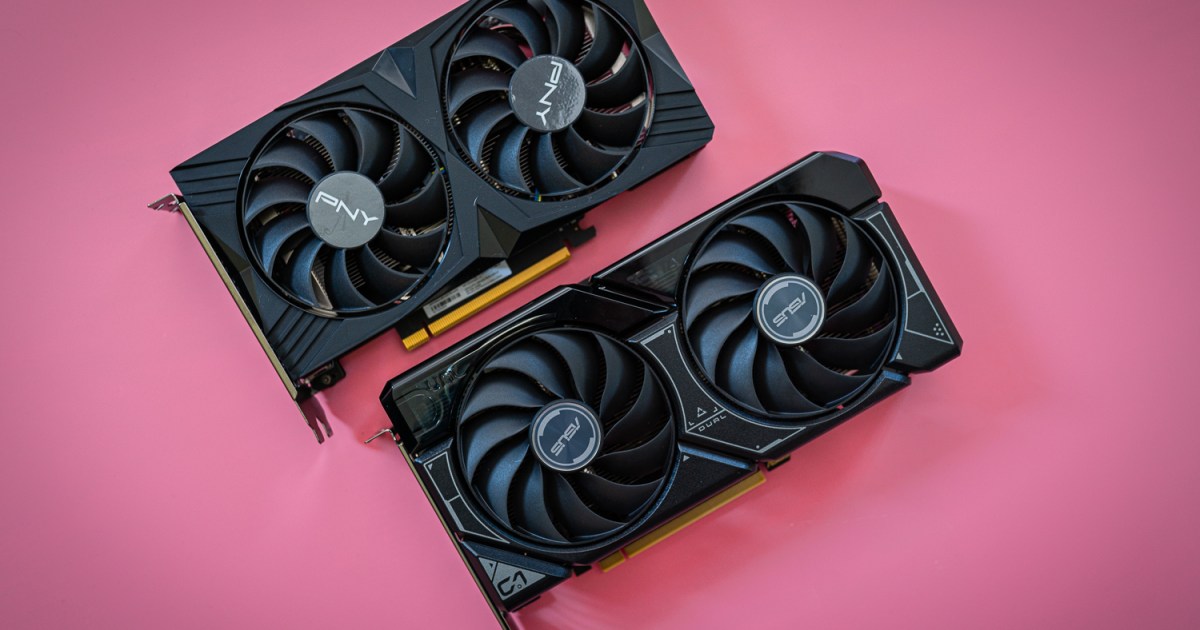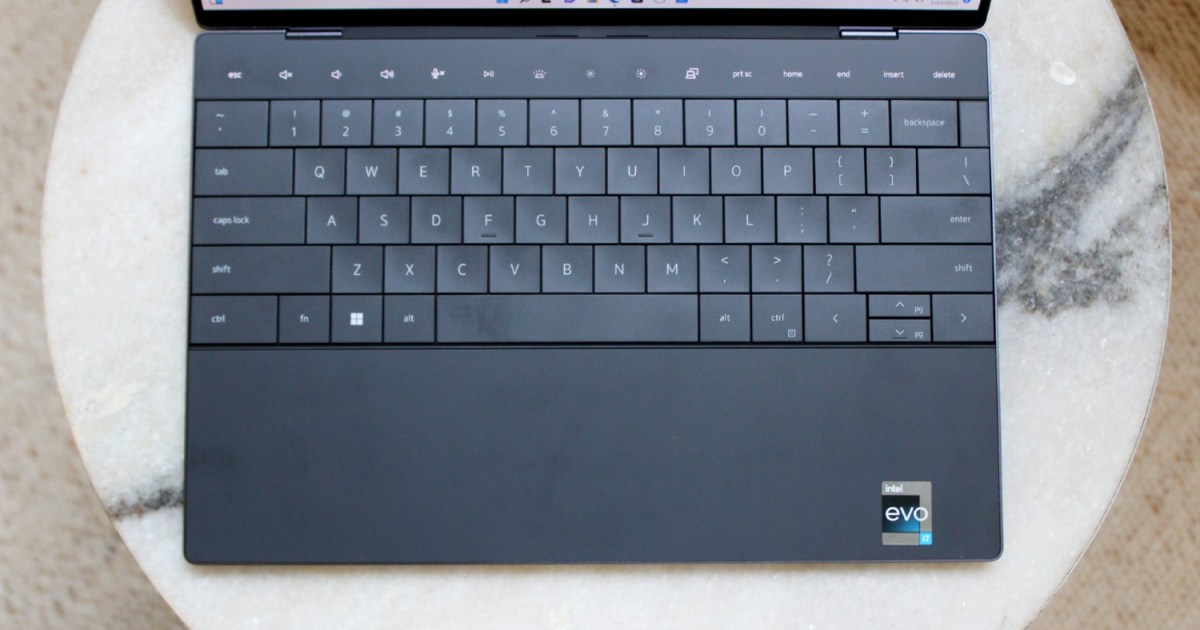The Asus Zenbook 14 OLED surprised me with its $700 starting price for a laptop featuring a high-resolution OLED display. This is an exceptional value considering the quality of the display technology. While the base model has relatively low-end specs, a mere $170 upgrade delivers significantly improved components. Even at this higher price, you get a solid, stylish OLED laptop with decent performance for under $1,000. Impressive.
Specifications and Configurations
| Feature | Asus Zenbook 14 OLED (Base Model) | Asus Zenbook 14 OLED (Upgrade Model) |
|---|---|---|
| Dimensions | 12.34 x 8.68 x 0.67 inches | 12.34 x 8.68 x 0.67 inches |
| Weight | 3.06 pounds | 3.06 pounds |
| Processor | AMD Ryzen 5 7530U | AMD Ryzen 7 7730U |
| Graphics | AMD Radeon graphics | AMD Radeon graphics |
| RAM | 8GB | 16GB |
| Display | 14.0-inch 16:10 2.8K (2880×1800) OLED, 90Hz | 14.0-inch 16:10 2.8K (2880×1800) OLED, 90Hz |
| Storage | 256GB SSD | 512GB SSD |
| Touchscreen | Yes | Yes |
| Ports | 2 x USB-C 3.2 Gen 2, 1 x USB-A 3.2 Gen 2, 1 x HDMI 2.0, 1 x 3.5mm audio jack, 1 x microSD card reader | 2 x USB-C 3.2 Gen 2, 1 x USB-A 3.2 Gen 2, 1 x HDMI 2.0, 1 x 3.5mm audio jack, 1 x microSD card reader |
| Wireless | Wi-Fi 6E, Bluetooth 5.2 | Wi-Fi 6E, Bluetooth 5.2 |
| Webcam | 1080p | 1080p |
| Operating System | Windows 11 | Windows 11 |
| Battery | 75 watt-hours | 75 watt-hours |
| Price | $700+ | $870+ |
Asus offers two configurations of the Zenbook 14 OLED. The base model, priced at $700, features an AMD Ryzen 5 7530U, 8GB of RAM, and a 256GB SSD. The upgraded version, at $870, boasts an AMD Ryzen 7 7730U, 16GB of RAM, and a 512GB SSD. Both models share the same stunning 14-inch 2.8K OLED display. While both are excellent values, the upgraded model offers significantly better performance and double the RAM and storage for a relatively small price increase, making it the recommended choice.
Design and Build Quality
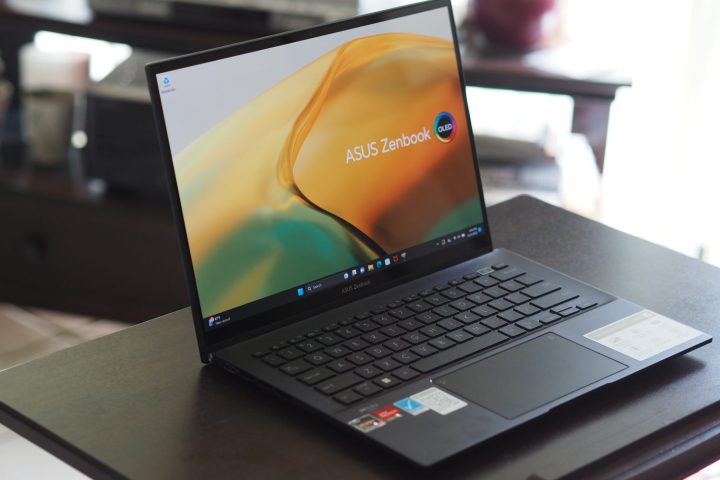 Asus ZenBook 14 OLED front angled view showing display and keyboard deck.
Asus ZenBook 14 OLED front angled view showing display and keyboard deck.
Minimalist design has become a prevalent trend in laptops, and the Zenbook 14 OLED embraces this aesthetic. Its sleek lines and subtle logos create a clean, modern look, accentuated by a uniquely rounded hinge. The solid black aluminum alloy chassis feels robust, with minimal flex in the keyboard deck and bottom. While the display has some give under pressure, it’s still a quality build for the price, especially compared to more expensive options like the Dell XPS 13 Plus.
Despite its 0.67-inch thickness and 3.06-pound weight, the Zenbook 14 OLED remains highly portable. While not the thinnest or lightest 14-inch laptop, it strikes a good balance between portability and usability.
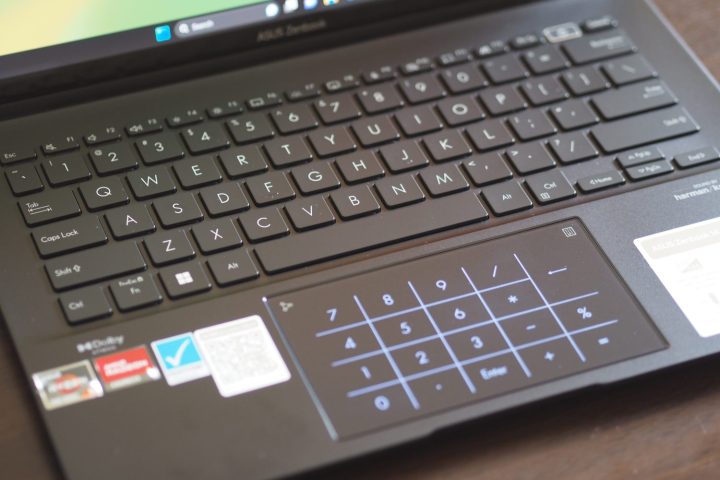 Asus Zenbook 14 OLED top down view showing keyboard and touchpad.
Asus Zenbook 14 OLED top down view showing keyboard and touchpad.
The keyboard is a highlight, featuring well-spaced, large keycaps and light, responsive switches. While not quite on par with the top-tier keyboards found on Dell XPS and HP Spectre laptops or Apple’s Magic Keyboard, it’s comfortable and efficient for extended typing sessions. The large touchpad offers crisp clicks and integrates Asus’s NumberPad 2.0 technology, providing a convenient LED numeric keypad.
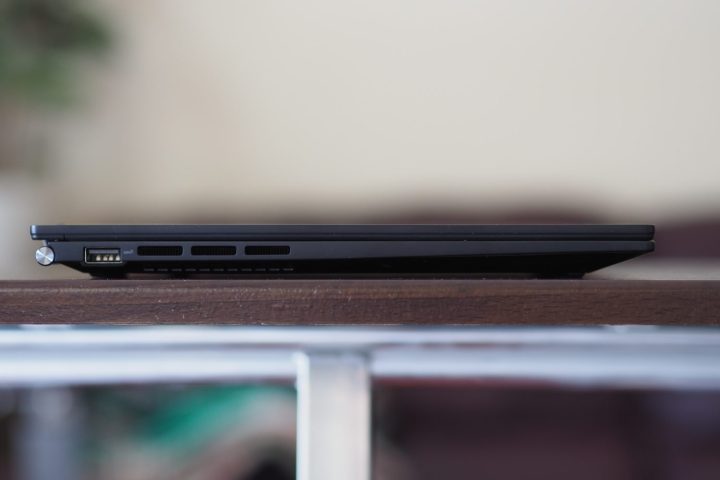 Asus Zenbook 14 OLED left side view showing ports.
Asus Zenbook 14 OLED left side view showing ports.
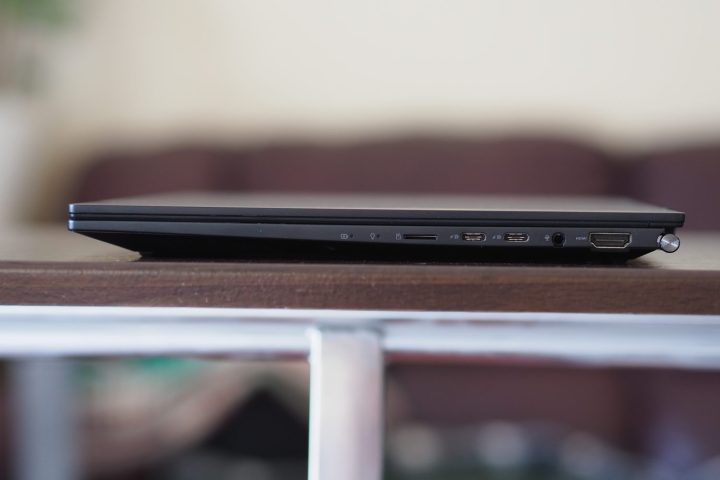 asus zenbook 14 oled review right
asus zenbook 14 oled review right
Connectivity is comprehensive, with a mix of modern USB-C ports and legacy USB-A and HDMI connections. The inclusion of a microSD card reader is welcome, though a full-size SD card slot would be preferable. Wireless connectivity is up-to-date with Wi-Fi 6E and Bluetooth 5.2. The absence of Thunderbolt 4 is a limitation due to the AMD chipset. The 1080p webcam delivers a clear image, and while it lacks infrared for Windows Hello facial recognition, the fingerprint reader integrated into the power button provides reliable biometric login.
Performance and Battery Life
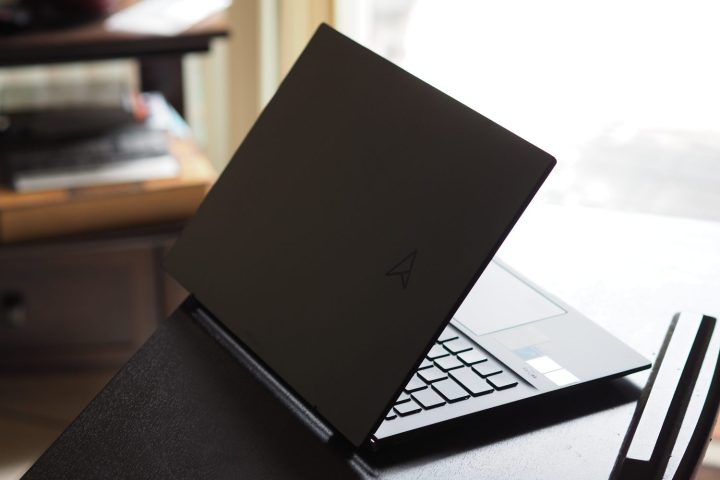 Asus Zenbook 14 OLED rear view showing lid and logo.
Asus Zenbook 14 OLED rear view showing lid and logo.
The review unit’s Ryzen 5 7530U is a 15-watt, 6-core/12-thread CPU with a max boost clock of 4.5GHz. Benchmark results show competitive performance against Intel’s Core i7-1355U and Apple’s M2, particularly in multi-core workloads. While not a gaming laptop due to its integrated Radeon graphics, it’s more than capable of handling demanding productivity tasks.
| Benchmark | Asus Zenbook 14 OLED (Ryzen 5 7530U) | HP Dragonfly Pro (Ryzen 7 7736U) | Lenovo Yoga Book 9i (Core i7-1355U) | Asus Zenbook S 13 OLED 2023 (Core i7-1355U) | Lenovo Yoga 9i Gen 8 (Core i7-1360P) | Apple MacBook Air M2 (M2) |
|---|---|---|---|---|---|---|
| Geekbench 5 (Single/Multi) | 1,457 / 7,527 (Balanced), 1,458 / 8,207 (Performance) | 1,530 / 11,158 (Balanced) | 1,797 / 6,926 (Balanced), 1,804 / 7,815 (Performance) | 1,829 / 6,893 (Balanced), 1,836 / 6,908 (Performance) | 1,843 / 8,814 (Balanced), 1,835 / 10,008 (Performance) | 1,925 / 8,973 (Balanced) |
| Handbrake (seconds) | 123 (Balanced), 121 (Performance) | 84 (Balanced) | 181 (Balanced), 118 (Performance) | 157 (Balanced), 135 (Performance) | 122 (Balanced), 101 (Performance) | 151 (Balanced) |
| Cinebench R23 (Single/Multi) | 1,457 / 7,527 (Balanced), 1,458 / 8,207 (Performance) | 1,530 / 11,158 (Balanced) | 1,681 / 6,303 (Balanced), 1,758 / 7,576 (Performance) | 1,629 / 6,005 (Balanced), 1,827 / 6,962 (Performance) | 1,846 / 8,779 (Balanced), 1,906 / 9,849 (Performance) | 1,600 / 7,938 (Balanced) |
| PCMark 10 Complete | 5,817 | 6,059 | 5,514 | 5,423 | 6,102 | N/A |
The Zenbook 14 OLED excels in battery life, thanks to its large 75 watt-hour battery. It offers all-day longevity for typical productivity tasks, though it doesn’t quite match the exceptional battery life of the Apple MacBook Air M2 or the HP Dragonfly Pro.
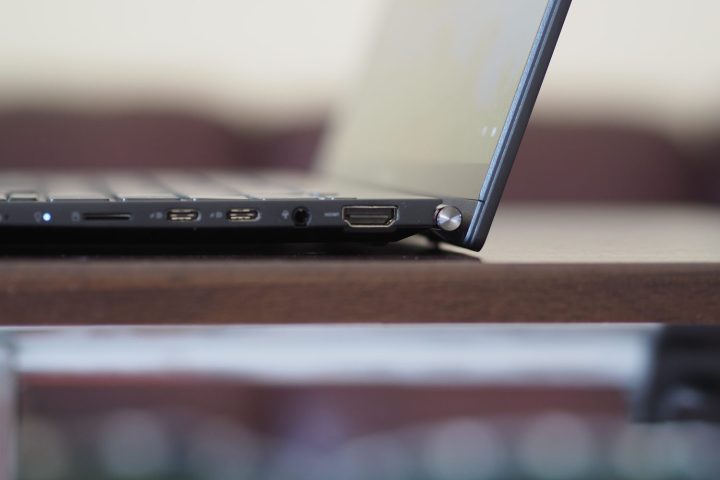 Asus Zenbook 14 OLED side view showing ports and display.
Asus Zenbook 14 OLED side view showing ports and display.
| Test | Asus Zenbook 14 OLED (Ryzen 5 7530U) | Lenovo Yoga Book 9i (Core i7-1355U) | Asus Zenbook S 13 OLED 2023 (Core i7-1355U) | Lenovo Yoga 9i Gen 8 (Core i7-1360P) | HP Dragonfly Pro (Ryzen 7 7736U) | Apple MacBook Air M2 (Apple M2) |
|---|---|---|---|---|---|---|
| Web Browsing | 12 hours, 13 minutes | 8 hours, 53 minutes | 9 hours, 47 minutes | 7 hours, 41 minutes | 14 hours, 40 minutes | 17 hours, 59 minutes |
| Video Playback | 17 hours, 19 minutes | 9 hours, 53 minutes | 15 hours, 14 minutes | 13 hours, 25 minutes | 15 hours, 57 minutes | 21 hours, 9 minutes |
| PCMark 10 Applications | 14 hours, 23 minutes | 11 hours, 20 minutes | 12 hours, 50 minutes | 9 hours, 40 minutes | 16 hours, 31 minutes | N/A |
Display Quality
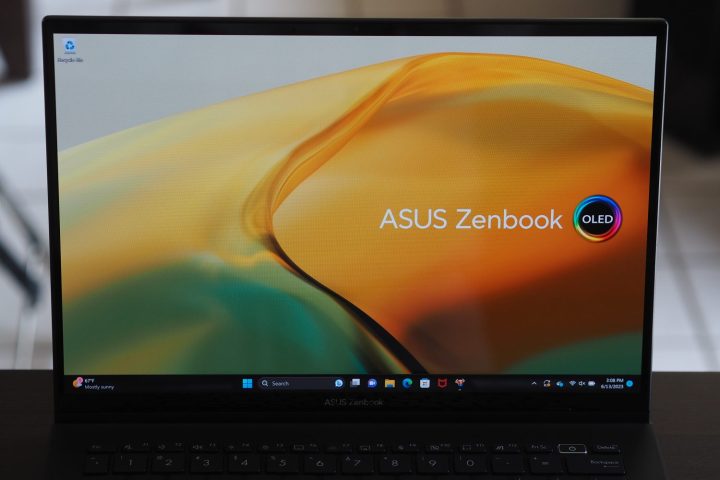 Asus Zenbook 14 OLED front view showing display.
Asus Zenbook 14 OLED front view showing display.
The Zenbook 14 OLED’s display is a standout feature. The OLED panel delivers vibrant, accurate colors and the characteristic deep blacks expected from OLED technology. While not the absolute best OLED display on the market in terms of brightness or color accuracy, it’s still an excellent panel, especially considering the laptop’s price. Its VESA DisplayHDR 500 True Black certification ensures stunning HDR content, although it can’t compete with the extreme brightness of mini-LED displays found on Apple’s MacBook Pro lineup.
Conclusion
The Asus Zenbook 14 OLED offers exceptional value for under $1,000. It delivers a compelling combination of performance, battery life, build quality, and a stunning OLED display. It’s a strong contender for anyone seeking a premium laptop experience without a premium price tag, unless demanding applications require significantly more processing power.



